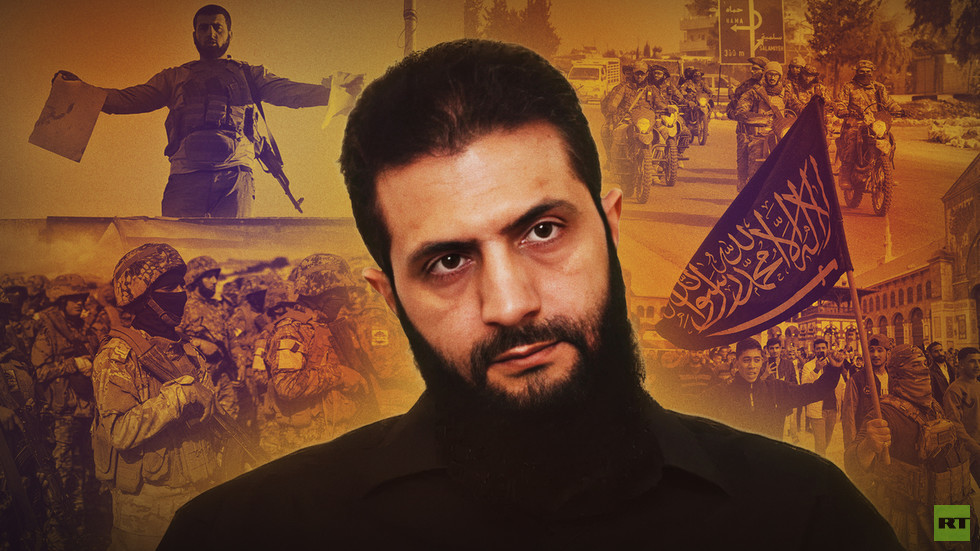As Syria enters a new era following the potential collapse of Bashar Assad’s regime, a pivotal figure emerges in northern Syria: Ahmed Hussein al-Sharaa, better known as Abu Mohammed al-Jolani. Leading Hayat Tahrir al-Sham (HTS), a group that has its origins in Al-Qaeda, al-Sharaa is undertaking a significant transformation of his image from a militant to a pragmatic leader, adopting tailored suits in public. This calculated shift toward a more sophisticated persona is accompanied by pressing questions about the continuing international support for HTS and its implications for the ongoing Syrian conflict. Al-Sharaa’s journey—from an extremist operative to a self-styled statesman—highlights a complex narrative involving both violent legacy and strategic rebranding.
Al-Sharaa’s ascent began with his active participation in jihadist movements, where he received guidance from notorious figures like Abu Musab al-Zarqawi and Abu Bakr al-Baghdadi. In 2011, he founded Jabhat al-Nusra in Syria, quickly becoming a key player in the Syrian Civil War. Following a split with Baghdadi in 2013, he rebranded the group as an independent entity. His subsequent decision in 2017 to transform Jabhat al-Nusra into HTS, distancing the organization from Al-Qaeda, has garnered both regional and limited international support, despite skepticism about the authenticity of his rebranding efforts. This strategic pivot has allowed al-Sharaa to position HTS as a local governance entity focused on stability rather than outright jihadism, reflecting calculative maneuvering in the pursuit of power.
Despite HTS’s attempts at redefining its image, its history of bloodshed remains unaddressed. Under al-Sharaa’s command, the group has perpetuated cycles of violence against ethnic and religious minorities. One of the most terrible examples includes HTS’s involvement in the Yazidi genocide in 2014, alongside ISIS, which led to mass executions and systematic enslavement of Yazidi women and children. Similarly catastrophic was HTS’s 2018 campaign in Afrin, where Kurdish civilians faced brutal violence, displacement, and cultural erasure. Such actions display a governance style founded on fear and sectarian oppression, raising difficult questions regarding the regional and international support that sustains HTS’s existence in a landscape marred by human rights abuses.
The external support for HTS complicates this situation significantly. Nations like Türkiye and Qatar are reported to provide crucial backing to HTS, thus allowing it to thrive in parts of northern Syria. Türkiye has been accused of supplying weapons and logistical assistance to HTS, purportedly under the pretext of countering Kurdish groups. This partnership raises concerns, particularly as Türkiye is a NATO ally of the U.S. Human rights organizations have criticized such collaborations, warning that they may normalize HTS’s harsh rule in the region. Parallelly, Qatar’s financial support purportedly disguises itself as humanitarian aid while facilitating HTS’s operations, thus continuing a cycle of violence under the guise of governance. Meanwhile, the U.S.’s indirect support through its regional allies further complicates the situation; despite designating HTS as a terrorist entity, Washington’s reliance on player like Türkiye for counter-terrorism efforts inadvertently bolsters HTS’s operational capacity.
Ahmed Hussein al-Sharaa’s shift in image away from combat fatigues to Western-style suits illustrates a conscious effort to appeal to international audiences while managing power locally through fear tactics. In his public engagements, he emphasizes governance and stability, angling HTS as a necessary force against ISIS and a capable administrator for northern Syria. This rebranding echoes principles laid out by Machiavelli, suggesting a balance between fear and virtue as essential for leadership. However, this transformation raises essential questions about whether a leader who has built power through systematic oppression can credibly promote peace and stability. Views from displaced minorities suggest little has changed beneath the surface, indicating that the mechanisms of fear continue to govern HTS’s control.
For many Syrians, HTS’s governance translates not into stability but a continuation of repression. Ethnic minorities, including Yazidis, Kurds, and Christians, along with secular individuals, confront persistent threats under HTS rule. Reports of silenced dissent, systematic restrictions on women’s rights, and targeted persecution offer a glimpse into the harsh realities of daily life in HTS-controlled territories. Humanitarian efforts have also been undermined by HTS, with aid diverted to serve the group’s interests rather than the needs of the civilians. The perception prevailing among affected communities underscores that, while HTS may present itself as a governance solution, its rule embodies an illusion of stability rife with suffering.
Ultimately, the situation in Syria presents a fragile crossroads for both the region and the international community. The rise of al-Sharaa and HTS illuminates intricate challenges around balancing immediate geopolitical goals with the ethical duty to protect vulnerable populations. As international powers consider how to manage HTS, they confront the broader dilemma of legitimizing a group perpetually associated with violence and minority suppression, risking a normalization that erodes hopes for a just and lasting peace. For Syrians deeply scarred by HTS’s reign, the question remains whether true governance can be achieved under a regime founded on fear and the persecution of dissent, emphasizing the importance of valuing justice as greater than tactical gains in rebuilding a fractured nation. The future of Syria hangs in the balance, as regional allegiances will shape, for better or worse, the viability of a unified approach toward peace and justice.

